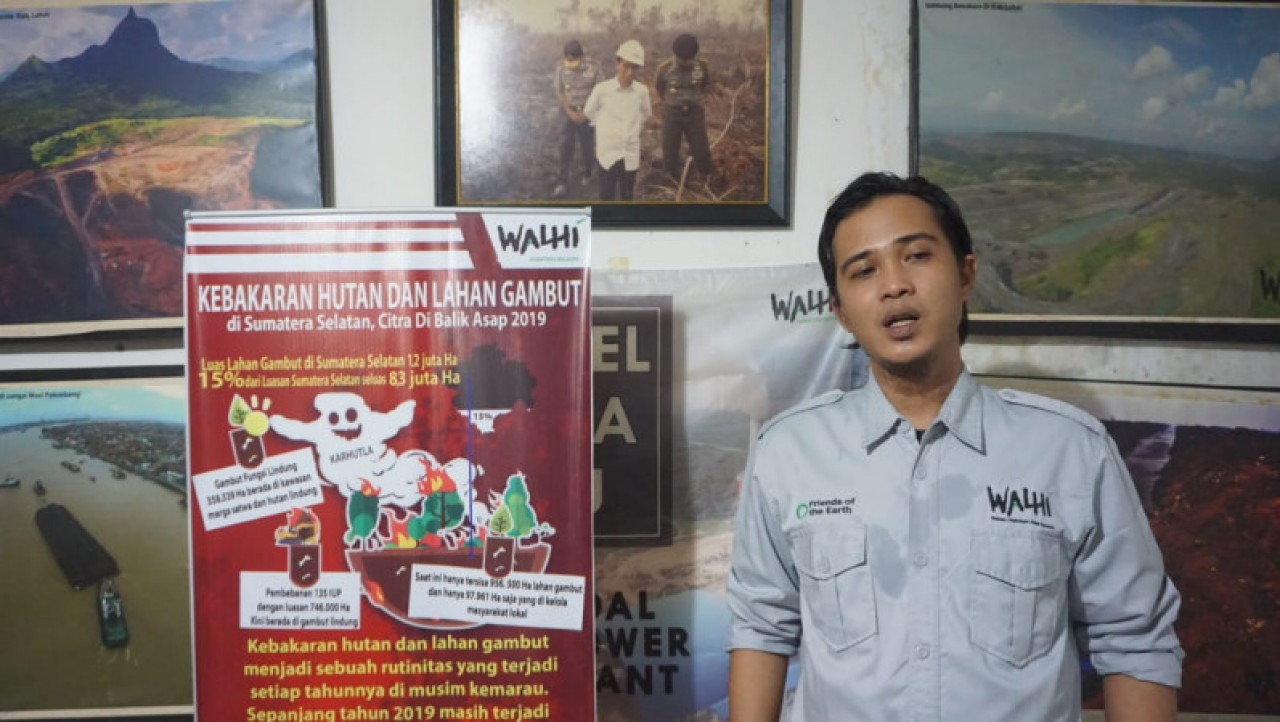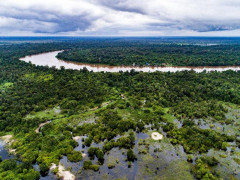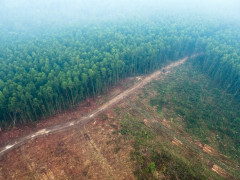Peatland Monitoring Methods in Concession Areas
By Pantau GambutRecurring Forest and Land Fires, a Bad Reflection on the Peat Protection Effort

The forest and land fires in South Sumatra keep recurring, the government should solve the peat issue by addressing the upstream side, namely peat protection. Mapping of peat areas, especially areas with concession permits, should be a primary focus. The government can create a deterrent effect to arsonists, such as the companies that do not properly protect their concession areas.
The protection of peat areas is part of the forest and land fires (Karhutla) benchmark. When the peat is well protected, the threat of forest and land fires can be optimally prevented.
The South Sumatra province has had a bad experience with forest and land fire. This area has also contributed a substantial amount of smoke during the seasonal ecological disaster. On the other hand, the forest and land fires threat could worsen the ongoing COVID-19 pandemic.
Forest and land fires have repeatedly occurred in South Sumatra. In 2019, the areas burnt by the forest and land fires increased compared to the previous three years. The 2019 fires, which were also affected by the dry climate (El-Nino), seemed to be a repeat of the 2015 fires. Most of these fires occurred in peatlands.
During the three months of fires in South Sumatra last year, 105,782 hectares (ha) of peatland were burned. Approximately 12,271.69 ha of the burned peatland had a depth of more than 300 cm or was categorized as very deep peat. In addition, 18,032 ha of deep peat, peat with a depth of 200-300 cm were also burned. Approximately 26,038 ha of medium peat, peat with a depth of 100-200 cm was burned and 49,441 ha of shallow peat, peat with a depth of 50-100 cm was also burned (Hutan Institute Data, HaKI, November 2019).
This data shows that the peat restoration efforts that were carried out in Indonesia after the massive 2015 forest and land fires have not had much effect.
Peat has very important functions, especially due to its carbon protection function. This protection function prohibits the conversion of peat. In conclusion, this year's forest fires are caused by four peat degradation factors, namely:
First, peat protection efforts are not implemented based on the landscape.
Last year, the government through the Ministry of Environment and Forestry (MoEF) mandated hydrological unit-based peat dome management. Referring to that commitment, the peat restoration efforts should also be carried out with the aspect to the regional unity, whether the peat is located inside or outside of the concession area.
The problem is we haven't heard anything about a united peat restoration effort. The Peat Restoration Agency (BRG) can only provide recommendations to concession area owners (companies) located in peatlands. The recommendation must be informed to the Ministry of Environment and Forestry as the line ministry that grants permits for the concession holder.
Due to the nature of the relationship, the peat restoration effort requires transparency, especially for efforts carried out by companies. The legal instruments that have been issued by the government should be able to urge companies in complying with the landscape-based peatland restoration effort.
Second, weak law enforcement
The government as the executor of state laws should implement regulations that have been ratified. The Environmental Law (Law No.32 of 2009) clearly stipulates the law enforcement efforts against negligent concession holders. In South Sumatra, none of the companies in the province received any penalty for negligence that causes forest and land fires, despite having a record as contributors to the forest and land fires disaster. The penalty of revoking their business license is an appropriate penalty to create a deterrent effect for the companies as well as to provide an example to other negligent companies.
Last year, the Ministry of Environment and Forestry shut down more than five companies in South Sumatra, but a year after they were closed, the public still does not know about the penalty given against companies holding concession permits. The government should have the courage to revoke the negligent companies’ business licenses. Weak and lenient law enforcement efforts give the impression that the government is siding with the companies. The government should be more in favor of safety, public health, and the environment.
On the other hand, the local governments are also able to carry out the mandate to implement the Law. The local government has the authority and ability to offer recommendations to companies that fail to manage their concession area. This recommendation urges the central government, especially the Ministry of Environment and Forestry, to enforce the law against arsonists as well as companies that fail to fulfill their land-related obligations. Local governments should be more assertive when it comes to these rights and authorities. Unfortunately, the local governments have never imposed stricter penalties against these negligent companies.
Third, peat-friendly programs are not united
Another problem is that the peat protection efforts have not become a united sustainable peat management program. For example, starting from the process of drafting a vision on preventing forest and land fires based on the knowledge on peatlands. The experience gained from recurring forest and land fires should give the local government sufficient information to map out areas with peat domes, particularly areas where a fire could quickly escalate and spreads. Awareness of peat protection efforts, especially among companies, has not become an integral part of a common vision. Efforts to assess peat areas with a certain depth should be a primary focus. The government needs to make the mapping of peat areas a primary focus in the prevention and fire-fighting activities.
Fourth, impacts of the pandemic
Currently, almost all of the government's attention is focused on the COVID-19 pandemic. Budget allocations have also been diverted in an effort to prevent and handle this pandemic. The pandemic requires everyone to maintain their distance (physical distancing) while reducing the number of group gatherings. Moreover, smoke from the land and forest fires presents a threat to the community’s respiratory health.
When forest and land fires are out of control, like a few years ago, it produced an extraordinary amount of smoke. Based on the air quality measurements, the smoke from forest and land fires caused the air to be categorized as polluted air (bad for the respiratory system). Therefore, haze during a pandemic situation will have a very negative effect on the community. Those who are vulnerable, such as children, people with co-morbidities related to the respiratory tract, and the elderly, will find it very difficult to do their activities.
Due to the interconnectivity of these issues, the government must start forest and land fires prevention efforts as a united program that aims to solve the root causes of these issues, namely the protection of peat areas. When the peat is well protected, the threat of forest and land fires will be minimized. Peat protection efforts are carried out in a unified area (landscape) and a unified understanding of the importance of protecting essential areas, such as peatland in South Sumatra.*
*This opinion was conveyed by the Executive Director of Walhi South Sumatra and Coordinator of Simpul Jaringan Pantau Gambut - South Sumatra, Hairul Sobri.
**THIS WRITING WAS PREVIOUSLY PUBLISHED ON THE GATRA.COM ONLINE MEDIA ON 30 JUNE 2020**



